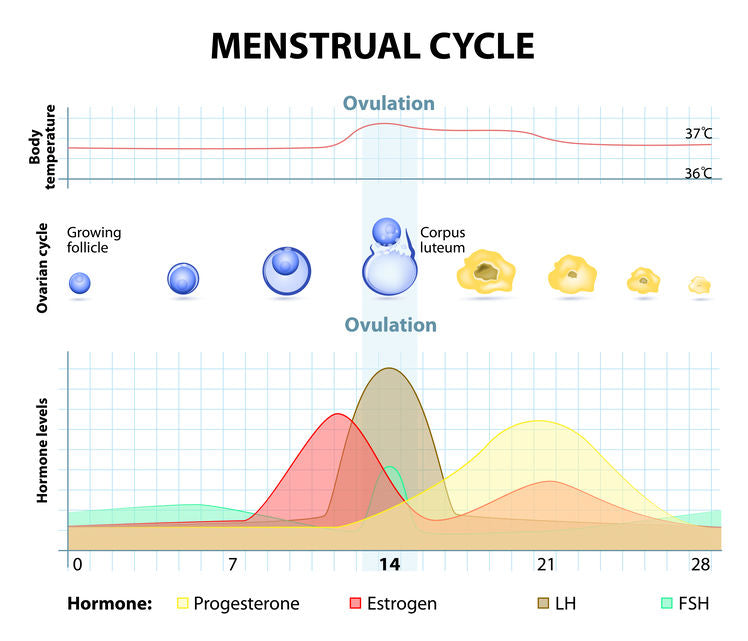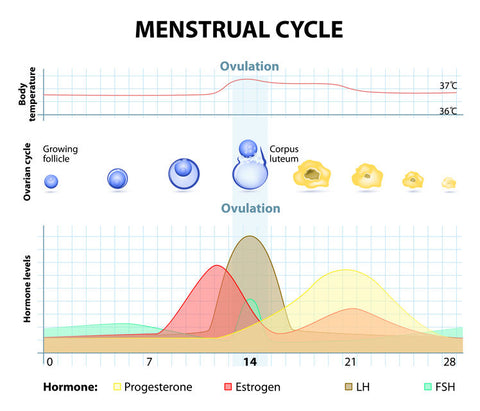
When Is The Best Time To Get Pregnant?


To get pregnant, you must be ovulating. If you are not ovulating, you will not have an egg in your fallopian tube for the sperm to fertilize. The best time to try to get pregnant is when you are sure your body is ovulating.
The Ovulation Process
The egg, which is known as the ovum, is released from the ovary. The mature ovum is released into the fallopian tubes where it starts its journey to the uterus, hopefully meeting a sperm along the way.After ovulation, the egg will start to deteriorate after about 12 hours. Sometimes eggs can stay fertilizable for up to 48 hours, but it is best for the sperm to reach the egg within the 12 hours for optimal chances of conceiving. Knowing when you are ovulating will help you to have the best chance of getting pregnant.
Counting Days for Ovulation
One of the most common methods used to determine when you might be ovulating is to "count days."Most women will ovulate 14 days before their period is due. If you know when your period is scheduled to arrive, you can count backward to find the potential day of ovulation.
If you have an average 28-day cycle, you should be ovulating on the 14th day. If you have longer cycles, the number of days may be a little different, but, with a bit of counting, you will have no trouble determining when ovulation should take place.
Have sex several times around this date to make sure that you do hit the day of egg release. Some doctors recommend every other day to ensure that the sperm will be present to meet the egg.
If you know how long your cycle is, you can use our online ovulation calendar to help you figure out when you should be ovulating.
Cervical Changes and Getting Pregnant
The cervix is an excellent indicator of when a woman might be fertile. A woman generally always has some mucus coming from the cervix. It can be sticky, clear, or stretchy during different times in a woman’s cycle.During ovulation, the mucus should be very stretchy and clear, and there should be a good amount of mucus. This mucus helps to protect and aid the sperm on the journey to the egg.
Cervical changes in the cervix itself also happen during ovulation. The cervix, which generally is tightly closed during a woman’s cycle, will open when the woman is most fertile.
For some women, the cervix will become open and slightly swollen during the time of ovulation.
Temping to Get Pregnant
Body temperature can help you predict when you will be ovulating. After you have ovulated, your basal temperature of your body will rise slightly.You can catch this rise by taking your basal temperature immediately when you wake up every morning. Use a special basal thermometer, take your temperature before you get out of bed and take it at the same time every morning to ensure that you are getting an accurate reading.
As the rise happens after you have already ovulated, you will need to chart your temperature for several months to figure out when ovulation is happening for you.
Abdominal Pain and Ovulation
Many women can feel when they ovulate. This is known as Mittelschmerz, which means "middle pain" in German. This pain can last for just a minute or has even been known to last for a few hours. If you feel this pain, you should have sex as soon as possible to get into the 12-hour window of ovulation.To increase your chances of getting pregnant, make sure that you try to pinpoint when you are ovulating and try to have sex during this time. The more you do to determine when you will ovulate, the better your odds of getting pregnant.
Tags:
Getting Pregnant
Quick links
Search
Contact Us
Shipping Information
Helpful Info
Terms of Service
Privacy Policy
Do not sell my personal information
Contact us
About us
BabyHopes.com is a family owned and operated business, opened in January 2001. We have been serving the trying to conceive community for over 20 years.
